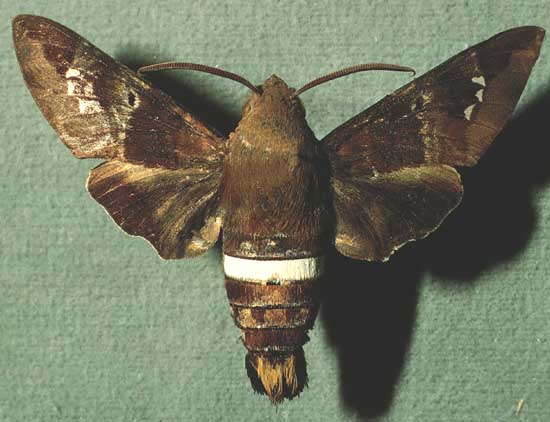
Aellopos clavipes male courtesy of Dan Janzen.
This site has been created by Bill Oehlke
Comments, suggestions and/or additional information are welcomed by Bill.
TAXONOMY:
Family: Sphingidae, Latreille, 1802 |
|
|
Updated as per More, Kitching and Cocucci's Hawkmoths of Argentina 2005, October, 2007 Updated as per http://biological-diversity.info/sphingidae.htm (Belize), October 2007 Updated as per Sphingidae (Lepidoptera) de Venezuela, Compilado por: María Esperanza Chacín; December 2009 Updated as per http://biological-diversity.info/sphingidae.htm (Belize), November 2007 Updated as per Fauna Entomologica De Nicarauga, November 2007 Updated as per The Known Sphingidae of Costa Rica, November 2007 Updated as per personal communication with Ezequiel Bustos (Aguas Blancas, Salta, Argentina, 405m); December 2009 Updated as per personal communication with Ben Trott (Playa del Carmen, Quintana Roo, Mexico); February 25, 2012; January 9, 2013 Updated as per personal communication with Sergio D. Ríos Díaz in CATÁLOGO DE LOS SPHINGIDAE (INSECTA: LEPIDOPTERA) DEPOSITADOS EN EL MUSEO NACIONAL DE HISTORIA NATURAL DEL PARAGUAY; sent to me in July 2014 by Sergio D. Ríos Díaz. Updated as per personal communication with Ezequiel Bustos (Shilap revta. lepid. 43 (172) diciembre, 2015, 615-631 eISSN 2340-4078 ISSN 0300-5267), January 4, 2016 Updated as per Hawk-moths (Lepidoptera: Sphingidae) of Trinidad, West Indies: an illustrated and annotated list; Matthew J.W. Cock; April 6, 2022 |

This site has been created by Bill Oehlke
Comments, suggestions and/or additional information are welcomed by Bill.
TAXONOMY:
Family: Sphingidae, Latreille, 1802 |
Sesia eumelas Jordan 1924, is a synonym for clavipes.
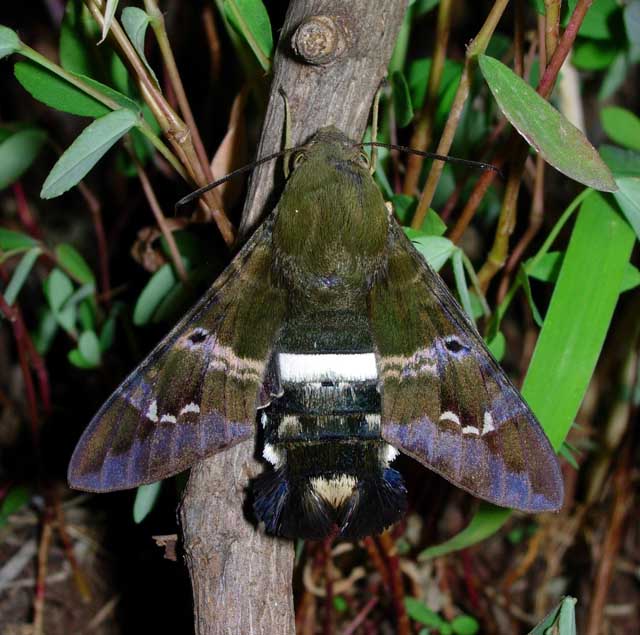
Aellopos clavipes, Playa del Carmen, Quintana Roo, Mexico,
courtesy of Ben Trott.
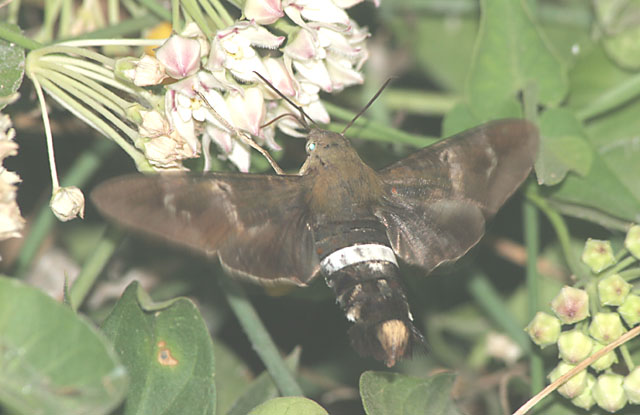
Aellopos clavipes, Hidalgo County, Texas, August 28, 2006, courtesy of Gil Quintanilla
In Texas the flight is in August and October. Adults nectar on flowers.
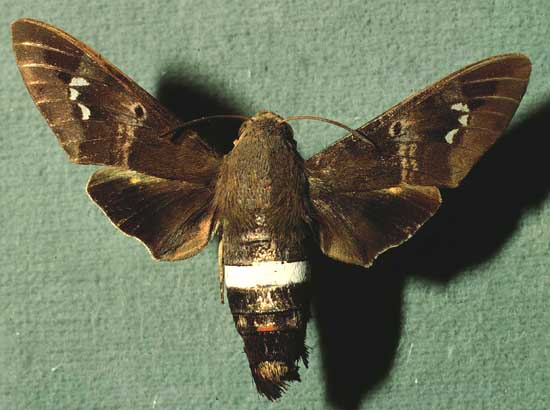
Aellopos clavipes female courtesy of Dan Janzen.
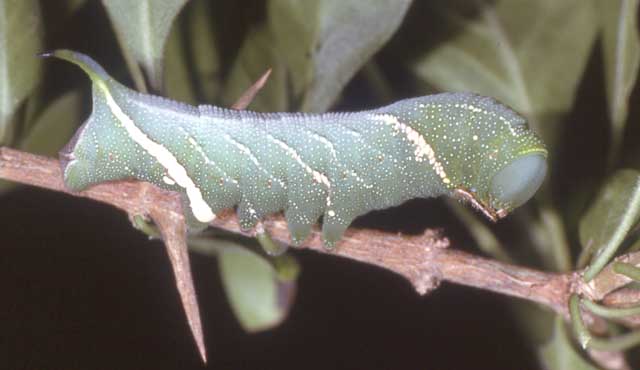
Aellopos clavipes fifth instar, copyright/courtesy of James P. Tuttle.
J.F. Doyle, writes, This species "probably uses Buttonbush, Cephalanthus occidentalis, a Rubiaceae, as a larval foodplant. It occurs along the Medina River, very close to Castroville, Texas. Reported to use other plants in that family in the Rio Grande Valley, i.e. Randia rhagocarpa. A. clavipes is more common there. I have learned that it has been recorded previously from this county and I will let you know the details on that as soon as I can."Image sent by Terry Doyle, October 9, 2006. |
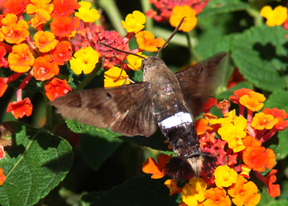
|
Caterpillars pupate in shallow underground chambers.
Ben Trott provides the following images and writes, "Although its foodplant Randia rhagocarpa is found everywhere, this is an elusive species. I have seen adults buzzing around in the early evening, and one female trying to lay eggs, I searched the bush afterwards, but no eggs were to be seen. The evidence of the larvae is common to find (old frass, stripped shrubs), but I have only found one so far."
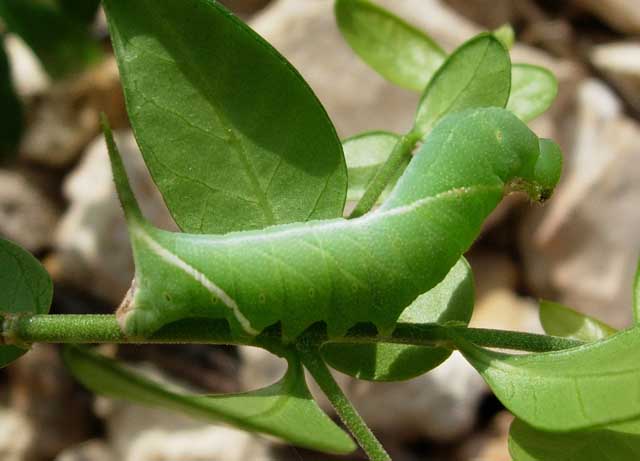
Aellopos clavipes fourth instar, Playa del Carmen, Quintana Roo, Mexico,
courtesy of Ben Trott.
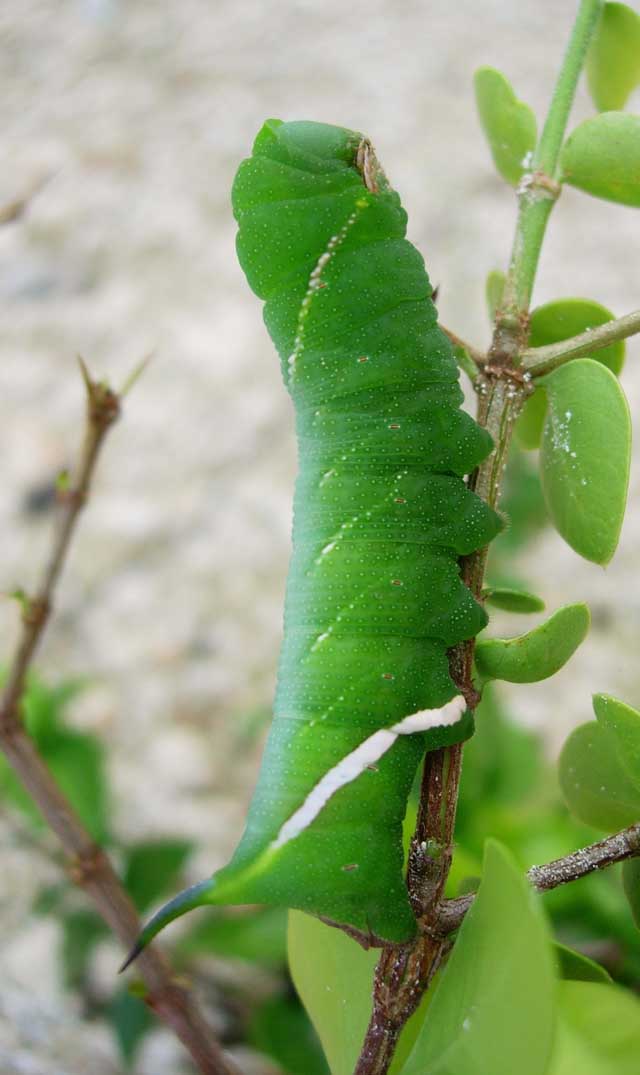
Aellopos clavipes fifth instar, Playa del Carmen, Quintana Roo, Mexico,
courtesy of Ben Trott.
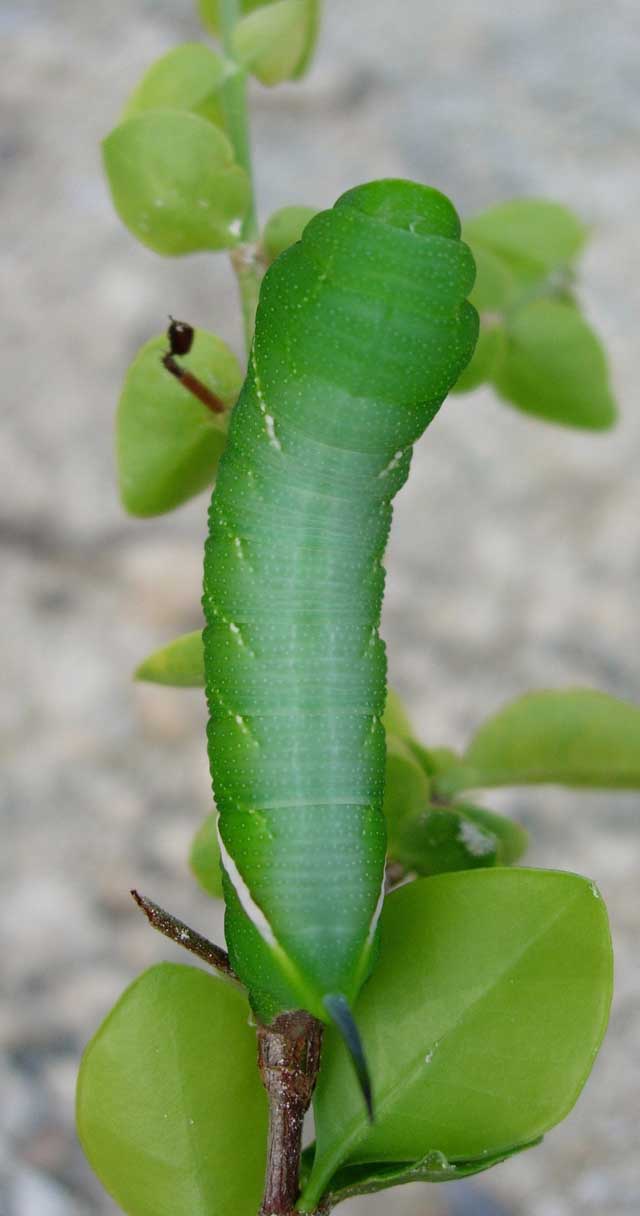
Aellopos clavipes fifth instar, Playa del Carmen, Quintana Roo, Mexico,
courtesy of Ben Trott.
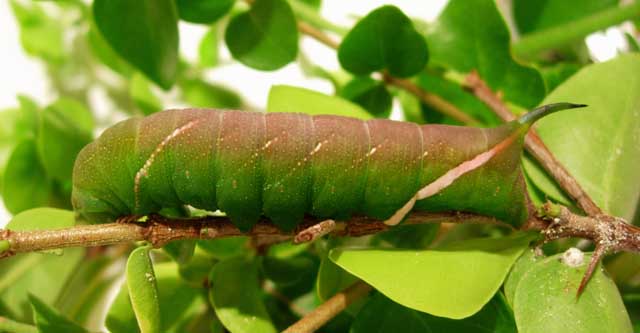
Aellopos clavipes prepupal fifth instar, Playa del Carmen, Quintana Roo, Mexico,
courtesy of Ben Trott.
"An egg laid on the 28th Nov. took three days to hatch. I reared the larva which pupated by the 10th December which hatched as an adult male on the 26th December."

Aellopos clavipes fifth instar, Sonora, Mexico,
July 2014, courtesy of Jean Haxaire.
Use your browser "Back" button to return to the previous page.
This page is brought to you by Bill Oehlke and the WLSS. Pages are on space rented from Bizland. If you would like to become a "Patron of the Sphingidae Site", contact Bill.
Please send sightings/images to Bill. I will do my best to respond to requests for identification help.